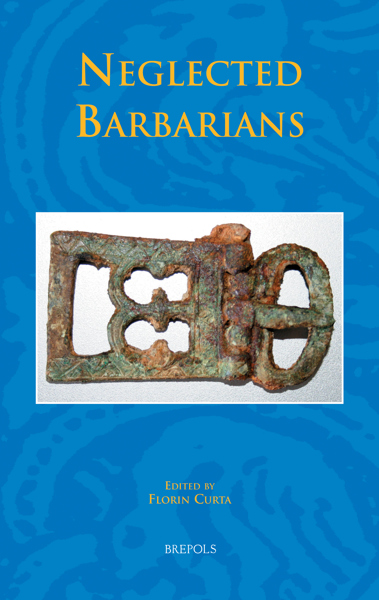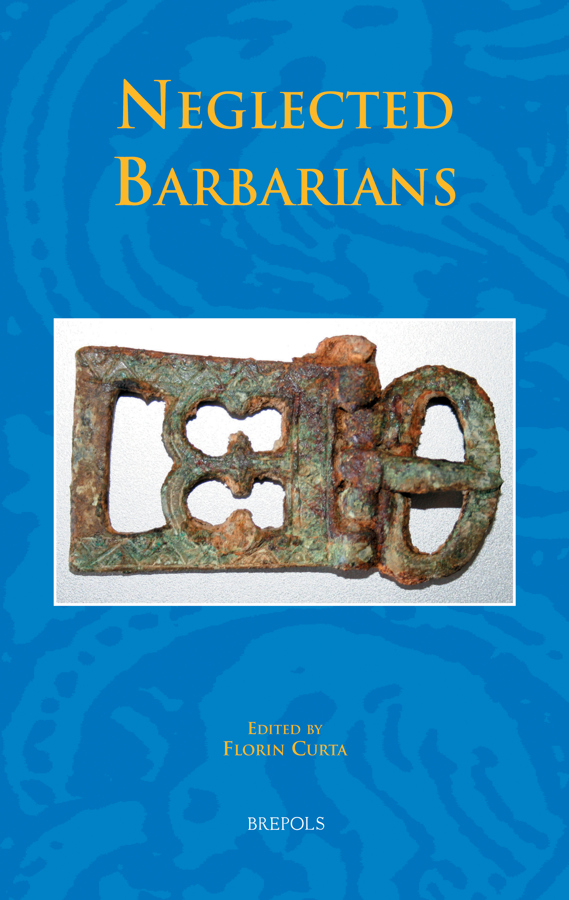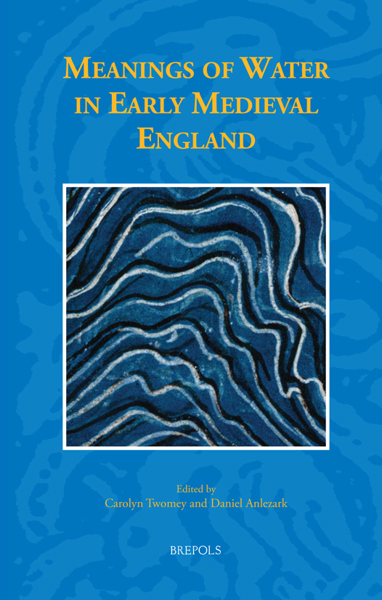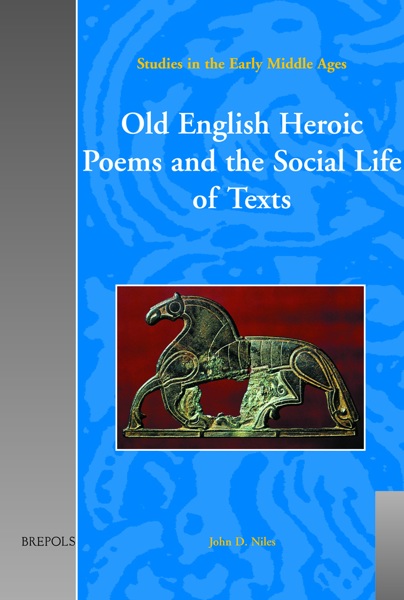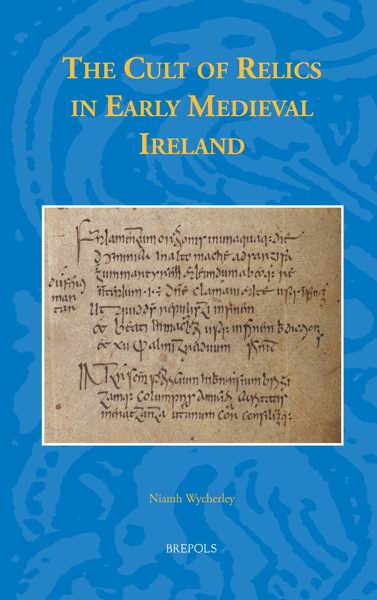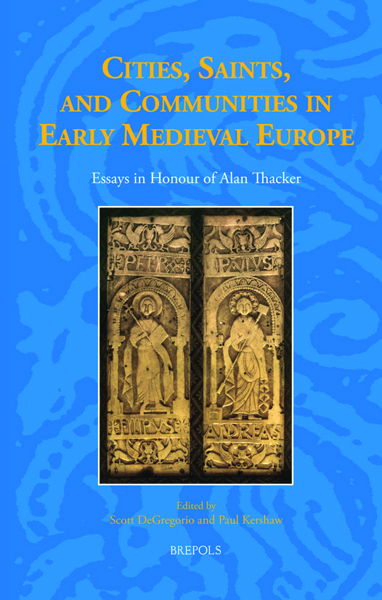
Neglected Barbarians
Florin Curta (ed)
- Pages: 656 p.
- Size:156 x 234 mm
- Illustrations:152 b/w, 35 col.
- Language(s):English
- Publication Year:2011
- € 135,00 EXCL. VAT RETAIL PRICE
- ISBN: 978-2-503-53125-0
- Hardback
- Temporarily Out of Stock
- € 135,00 EXCL. VAT RETAIL PRICE
- ISBN: 978-2-503-53965-2
- E-book
- Available
Neglected Barbarians explores the history and archaeology of little-known and less written about peoples of Late Antiquity and the early Middle Ages.
"Altogether, Neglected Barbarians brings valuable contributions to the ongoing discussion and deserves a prominent place among the works dedicated to exploring the transition from Roman to post-Roman in Europe and the Mediterranean." (Arnold A. Lelis, in: The Medieval Review, 13.02.12)
"Throughout the Neglected Barbarians, the chapters are helpfully formatted, with clear, subtitled sections and distinct conclusions that will surely be a valuable aid for students and researchers alike. Where appropriate, there is no shortage of well-labelled maps, diagrams and illustrations of artefacts to aid comprehension and to elucidate relevant archaeological finds. This attention to accessibility, together with a structure which accentuates the complimentary nature of the various detailed chapters within, serves to make this academically rigorous, 656-page volume impressively welcoming. This work will surely contribute considerably to relieving the neglect of its subjects." (Michael Burrows, in: Networks and Neighbours, 3.1, 2015, p. 45-47)
Although barbarians in history is a topic of perennial interest, most studies have addressed a small number of groups for which continuous narratives can be constructed, such as the Franks, Goths, and Anglo-Saxons. This volume examines groups less accessible in the literary and archaeological evidence. Scholars from thirteen countries examine the history and archaeology of groups for whom literary evidence is too scant to contribute to current theoretical debates about ethnicity. Ranging from the Baltic and northern Caucasus to Spain and North Africa and over a time period from 300 to 900, the essays address three main themes. Why is a given barbarian group neglected? How much can we know about a group and in what ways can we bring up this information? What sorts of future research are necessary to extend or fill out our understanding? Some papers treat these questions organically. Others use case studies to establish what we know and how we can advance. Drawing on those separate lines of research, the conclusion proposes an alternative reading of Late Antiquity and the early Middle Ages, viewed not from the ‘centre’ of the privileged but from the ‘periphery’ of the neglected groups. Neglected Barbarians covers a longer time span than similar studies of this kind, while its frequent use of the newest archaeological evidence has no parallel in any book so far published in any language.
Professor Florin Curta researches the written and archaeological evidence of medieval history on the European continent. His recent studies dealt with such diverse topics as power representation in early medieval Bulgaria; the archaeology of service settlements in the early Middle Ages; the earliest Avar-age stirrups; the history of medieval archaeology; hilltop settlements in the early Byzantine Balkans; the archaeology of identity in Old Russia; the Amber Trail in early medieval Europe; and the history of Southeastern Europe in the Middle Ages.
Introduction - FLORIN CURTA
The Backcountry Balts (Aesti) and the ‘Northern Gold’ in Late Antiquity and the Early Middle Ages - AUDRONË BLIUJIENË
The Mysterious Barbarians of Mazuria: The Riddle of the Olsztyn Group - WOJCIECH NOWAKOWSKI
The Antes: Eastern ‘Brothers’ of the Sclavenes? - BARTLOMIEJ SZYMON SZMONIEWSKI
Bosporus, the Tetraxite Goths, and the Northern Caucasus Region during the Second Half of the Fifth and the Sixth Centuries - IGOR O. GAVRITUKHIN AND MICHEL KAZANSKI
A Hun-Age Burial with Male Skeleton and Horse Bones Found in Budapest - MARGIT NAGY
A Fifth-Century Burial from Old Buda (Budapest) - ÁGNES B. TÓTH
Where Did All the Gepids Go? A Sixth- to Seventh-Century Cemetery in Bratei (Romania) - RADU HARHOIU
Gepids in the Balkans: A Survey of the Archaeological Evidence - ANNA KHARALAMBIEVA
Bohemian Barbarians: Bohemia in Late Antiquity - JAROSLAV JIØÍK
The Herules: Fragments of a History - ROLAND STEINACHER
The Justinianic Herules: From Allied Barbarians to Roman Provincials - ALEXANDER SARANTIS
Still Waiting for the Barbarians? The Making of the Slavs in ‘Dark-Age’ Greece - FLORIN CURTA
Astures, Cantabri, and Vascones: The Peoples of the Spanish North during the Late and Post-Roman Period - SANTIAGO CASTELLANOS
Suevic Coins and Suevic Kings (418–456): The Visigothic Connection - FERNANDO LÓPEZ SÁNCHEZ
Hidden Tracks: On the Vandal’s Paths to an African Kingdom - GUIDO M. BERNDT
The Frexes: Late Roman Barbarians in the Shadow of the Vandal Kingdom - PHILLIPP VON RUMMEL
Afterword: Neglecting the Barbarian - PETER HEATHER
List of Contributors
Maps and Plates
